The Animals of Brazil (An ecosystem within the City)
It is said that 4 out of 5 people will expect to encounter a robber in the city than to see wild animals in the street.
Wildlife. Undomisticated animals.
This holds true for most cities in the world. As cities have become very urbanized and crowded, sighting of wild animals are considered rare.
But not in Brazil.
I remember my first month here in Brazil. I was visiting Brasilia, the capital of the country and one of the busiest city here. I was headed to see the National museum when my attention was caught by this big white Garça hunting for food.
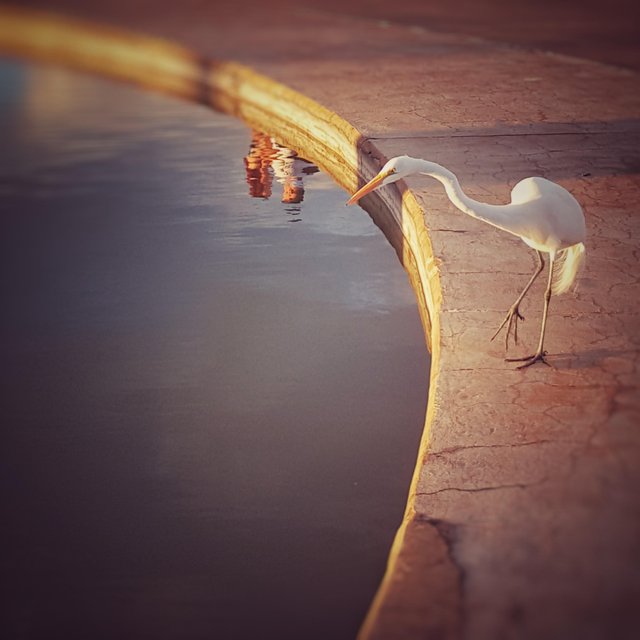 Garça (or Great White Heron) hunting in the busy center of Brasilia
Garça (or Great White Heron) hunting in the busy center of Brasilia
- Garça or Great White Heron
is a migratory bird common on rivers, lakeside and plains. Its diet is mainly fish but studies revealed that it can eat anything that fits its beak. During reproduction, the Garça grows long feather in the dorsum called egretas. These feathers have become popular in Europe as hats and clothing adornments.
I heard about Capibara many times before I arrived here in Brasil. And I remember being really excited to see one. Not only one, but I saw atleast 10 Capibaras when I visited Barigui Park in Curitiba, Parana. The 140 hectare park is located in the center of the city. There are many people walking, jogging, biking, skating, and doing varieties of exercise when we arrived in the Park. I was not expecting that with these many people around, Capibaras are sharing the area with them. Actually not only Capibaras but there are Ravens, Quero-Quero, Goose and variety of birds in the vicinity too.
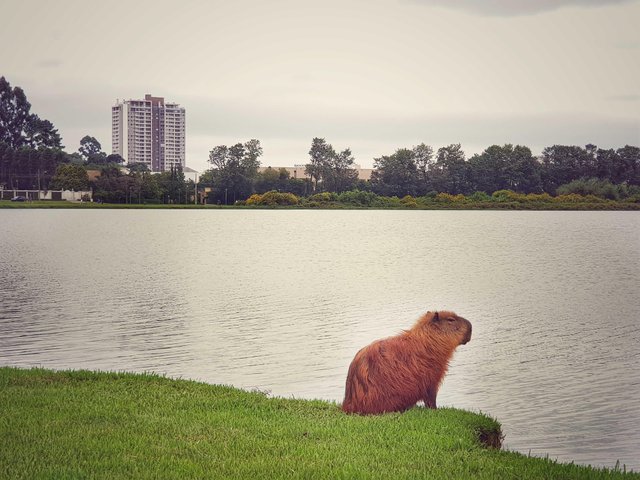 A capibara resting on the lakeside. He didnt mind the people staring at him
A capibara resting on the lakeside. He didnt mind the people staring at him
- Capibara or Carpincho
The biggest rodent in the world is also considered the friendliest animal in the world by DailyMail. A close relative of Guinea Pigs and Rock Cavies, Capibara is a native of South America. They stay in big groups and live near Savannas and dense forest with nearby bodies of water. Capibaras are herbivores, feeding mainly on grasses and aquatic plants.
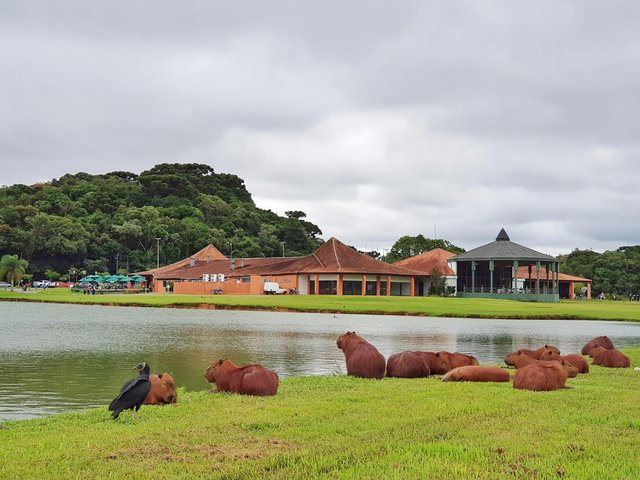 Capibara in groups with a lost Raven joining the siesta
Capibara in groups with a lost Raven joining the siesta
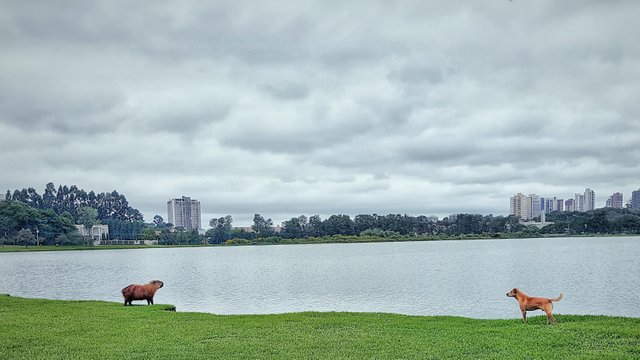 Not only humans, but it seems the dog is also curious about this lone Capibara
Not only humans, but it seems the dog is also curious about this lone CapibaraBarigui Park also serves as habitat for different species of birds. But what really caught my attention was these couple vultures resting in the green grass near the flock of Capibaras. This was my first time seeing Black Vultures at close proximity. Though they tried to run away from us, they never really went very far.
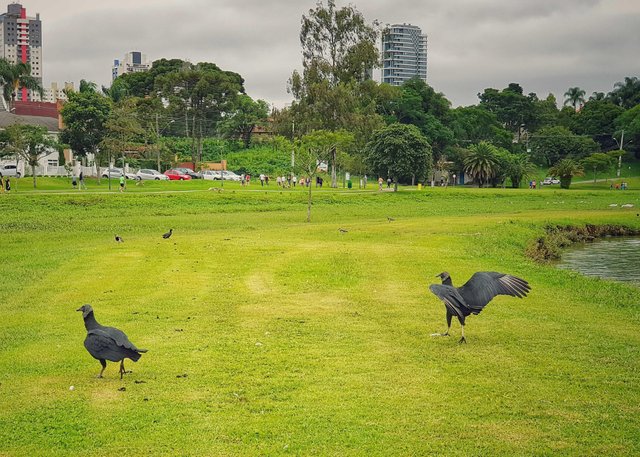
- Black Vulture
Also known as American Vulture, is a scavenger that feeds on carrion (decaying animals) and also hunts newborn animals and eats eggs. In the city, they also feeds at garbage dump. They are usually non-migratory birds found in the Midwestern United States, the southern United States, Mexico, Central America and most of South America. They stay mostly in lowlands forests, shrublands and grasslands, wetlands and swamps, pastures, and heavily degraded former forests.
After visiting Barigui Park, we went ahead to São Laurenço Park. We were welcomed by a flock of Gooses swimming in the man-made lake. Few minutes later, a black bird with a red head swam from the river to look for food. Upon searching, this bird is called Moorhen.
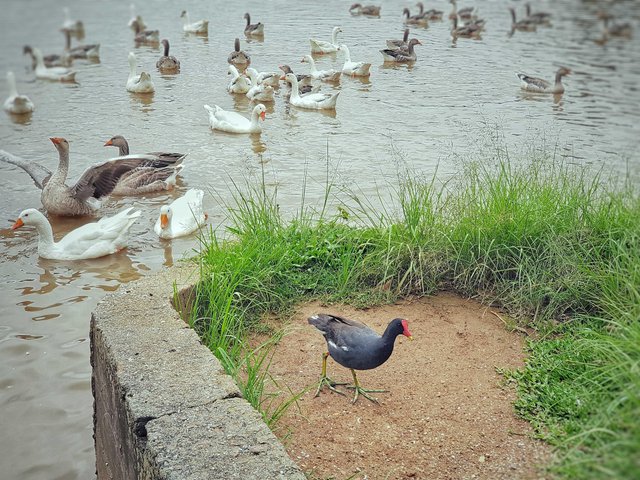 A Moorhen searching for food.
A Moorhen searching for food.- Moorhen
Also called Marsh Hens are medium-built water birds from the rail family (Rallidae). They are usually found in open water margins. They are omnivores that feed on plants, eggs, small rodents and amphibians. The common Moorhens are migratory, usually travelling 2000km from its breeding areas. They are also aggressively territorial during the breeding season.
Unlike the Big White Heron I saw in the middle of Brasilia, I saw this very handsome Caracara Falcon while we were resting in a souvenir shop in Ponta Grossa. With his very handsome features, he immediately caught the attention of the people in shop. But this Caracara didnt seem to mind, he stayed for another 10minutes before fying back to the trees.
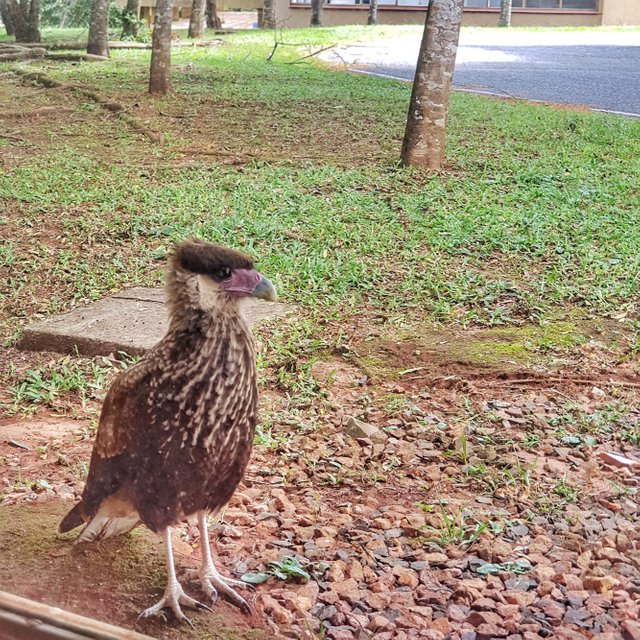 A lone Caracara Falcon taking some shade from the sun at Ponta Grossa
A lone Caracara Falcon taking some shade from the sun at Ponta Grossa- Caracará or Carcará
Caracaras are birds of prey that belong to the family of Falconidae. These birds are primarily found in South and Central America, usually in open fields, savannas, forest edges, beaches and urban areas. They are said to be omnivores but they actually feed on anything. They feed on invertebrates, fishes, lizards, crabs, snakes, dead animals and plants. When hunting, the Caracara kills its prey by pecking at its neck.
I've seen more animals in different parts of the cities and parks. Some I couldnt even have the chance to take photos. Because when I saw then free playing or hunting around, I just just stopped in awe. Animals without the cage is such a magnificent and magical view.
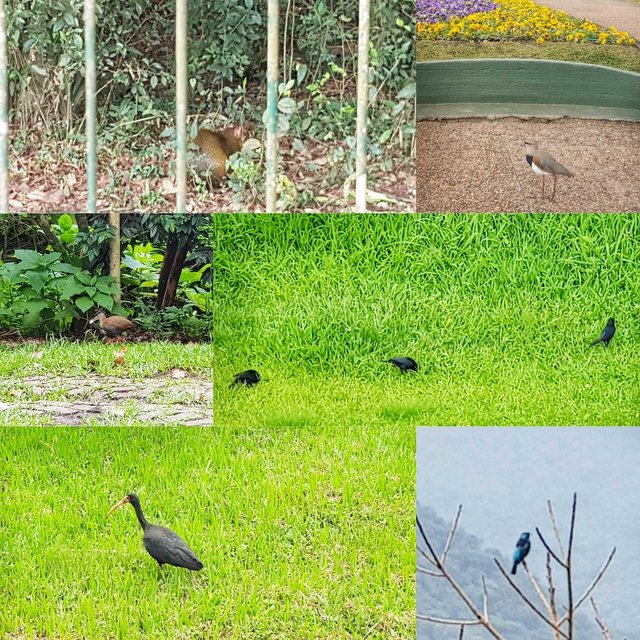 Left to Right: Paca eating behind the gate of Botanical Garden; Quero-quero enjoying the cold weather; Saracura taking his food to safety; Chupim in group; Coro-coro searching for food; Sanhaço azul on top of a tree in Joinville
Left to Right: Paca eating behind the gate of Botanical Garden; Quero-quero enjoying the cold weather; Saracura taking his food to safety; Chupim in group; Coro-coro searching for food; Sanhaço azul on top of a tree in Joinville
) - Black Vulture
The photo of the garça deserves more than esteemit.
Thank you. The bird is just simply amazing. And the sunset too. :)